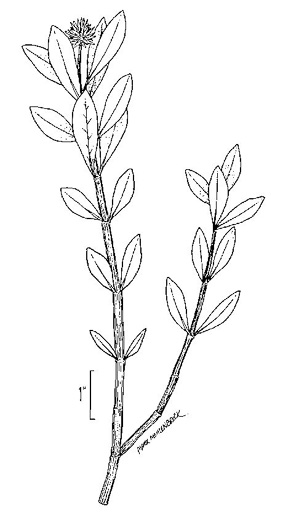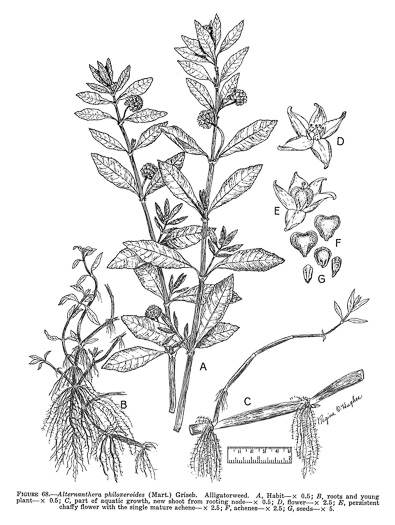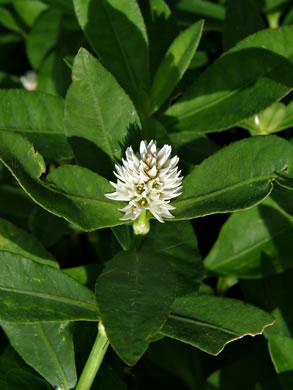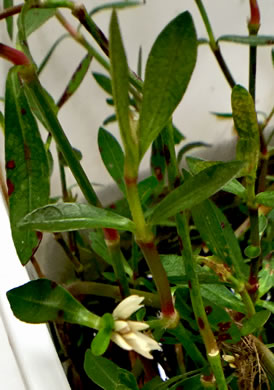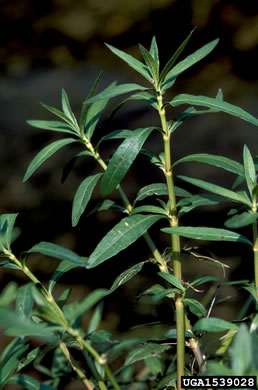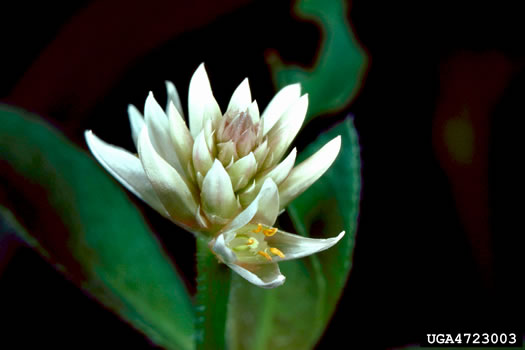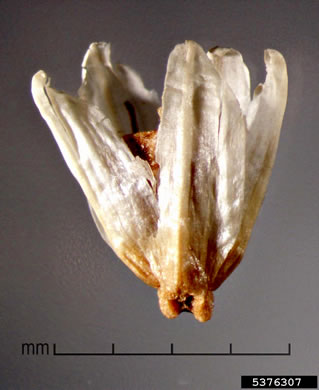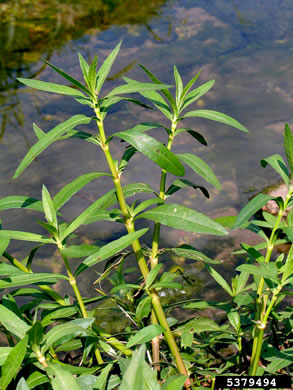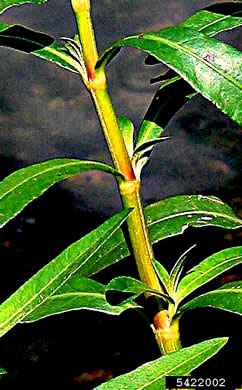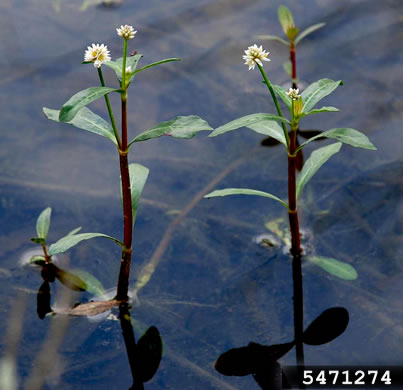Spermatophytes (seed plants): Angiosperms (flowering plants): Eudicots: Core Eudicots: Caryophyllales
WEAKLEY'S FLORA OF THE SOUTHEASTERN US (4/24/22):
Alternanthera philoxeroides
FAMILY
Amaranthaceae
Go to FSUS key
Dig deeper at SERNEC, a consortium of southeastern herbaria.
Check out EDDMapS.org to see where this has been reported.
Read more about Alligator-weed at Vascular Plants of North Carolina.
This plant is a serious weed of natural areas, per Weakley's Flora (2022)
SYNONYMOUS WITH
PLANTS NATIONAL DATABASE:
Alternanthera philoxeroides
FAMILY
Amaranthaceae
SYNONYMOUS WITH Floristic Synthesis of North America. BONAP (Kartesz, 2021)
Alternanthera philoxeroides
SYNONYMOUS WITH Flora of North America
Alternanthera philoxeroides
SYNONYMOUS WITH VASCULAR FLORA OF THE CAROLINAS (Radford, Ahles, & Bell, 1968) 066-01-002:
Alternanthera philoxeroides FAMILY Amaranthaceae
SYNONYMOUS WITH Manual of the Southeastern Flora (Small, 1933, 1938)
Achyranthes philoxeroides
COMMON NAME:
Alligator-weed
To see larger pictures, click or hover over the thumbnails.
Richard and Teresa Ware rtw_a_philoxeroides
June
Small, white, rounded cloverlike clusters of tiny flowers are 0.5-0.7" wide, per A Field Guide for the Identification of Invasive Plants in Southern Forests (Miller, Chambliss, & Lowenstein, 2010).
![]() COMPARE
aquatic plants
COMPARE
aquatic plants
James H. Miller, USDA Forest Service, Bugwood.org bug_1539028
Month Unknown
Leaves somewhat succulent, obtuse to rounded at the tip, per Weakley's Flora (2012).
Gary Buckingham, USDA Agricultural Research Service, Bugwood.org bug_4723003
Month Unknown
Each flower w 5 minute petals (actually sepals) surrounding yellow anthers, per A Field Guide for the Identification of Invasive Plants in Southern Forests (Miller, Chambliss, & Lowenstein, 2010).
Julia Scher, Federal Noxious Weeds Disseminules, USDA APHIS ITP, Bugwood.org bug_5376307
Month Unknown
Nancy Loewenstein, Auburn University, Bugwood.org bug_5471274
Month Unknown
Bracts not keeled. Peduncles 1-7cm, from the leaf axils or terminal, per Weakley's Flora (2012).
WEAKLEY'S FLORA OF THE SOUTHEASTERN US (4/24/22):
Alternanthera philoxeroides
FAMILY
Amaranthaceae
SYNONYMOUS WITH
PLANTS NATIONAL DATABASE:
Alternanthera philoxeroides
FAMILY
Amaranthaceae
SYNONYMOUS WITH
Floristic Synthesis of North America. BONAP (Kartesz, 2021)
Alternanthera philoxeroides
SYNONYMOUS WITH
Flora of North America
Alternanthera philoxeroides
SYNONYMOUS WITH
VASCULAR FLORA OF THE CAROLINAS (Radford, Ahles, & Bell, 1968) 066-01-002:
Alternanthera philoxeroides
FAMILY
Amaranthaceae
SYNONYMOUS WITH
Manual of the Southeastern Flora (Small, 1933, 1938)
Achyranthes philoxeroides
If a search such as "Carex leptalea var. leptalea" doesn't deliver the results you want, try "Carex leptalea".
Or, to minimize chances of a misspelling, try just "Carex le".
Less is more: If "pencil flower" doesn't deliver the results you want, try "pencil".

